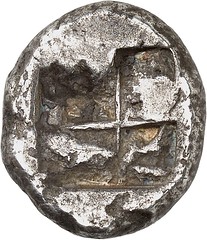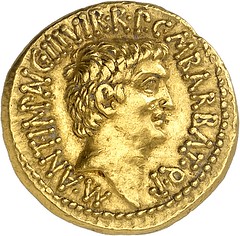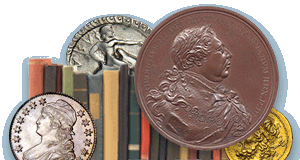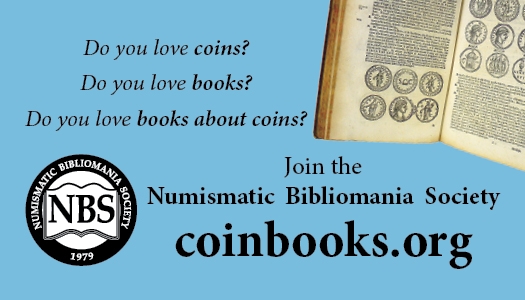
PREV ARTICLE
NEXT ARTICLE
FULL ISSUE
PREV FULL ISSUE
KUENKER AUCTION SALE 419On March 17, 2025, Künker will hold its auction of ancient issues presenting 638 selected lots. Most of them are from the collection of a lawyer who took great care to ensure perfect quality and exquisite provenance whenever he bought a coin. The result: a dream collection. And his coins are not the only ones with pedigrees that go way back. -Garrett The Collection of a Lawyer: Roman Coins with Exquisite Provenances Only 638 lots will be offered in Künker's auction 419 of ancient coins. But these 638 lots are truly special. No matter whether you are interested in Celtic rarities, the finest Greek art or outstanding Roman portraits – in auction 419 you will find what you are looking for. The offer presents several collections. Two of them are particularly remarkable: for one the collection of a lawyer who exclusively bought Roman coins with exquisite provenances; and an anonymous collection that was completed before 1990 and contains many showpieces. Celtic Rarities Celtic coins are still a specialist area of numismatics that appeals to all those who are looking for something exceptional. In its auction, Künker is offering 37 lots from the Celtic culture, including some highly rare pieces. Connoisseurs will find not only the well-known and popular "rainbow cups" but also rare types such as the imitation of a gold stater based on the coins of Philip II and a tetradrachm of the "tournament horseman" type. Both pieces testify to the fact that the Celts learnt about coinage while fighting as mercenaries in the Macedonian army. Celtic artists used these coins as models for their own designs. 

No. 2: Celts. Gaul. Anonymous. Gold stater, "soy" type, 3rd century BC. From Leu Numismatik AG auction 4 (2019), No. 92. Very rare. Extremely fine. Estimate: 12,500 euros


No. 32: Celts. Pannonia. Tetradrachm, "tournament horseman" type, around 150 BC. From Kress auction 135 (1966), No. 219. Extremely rare in this quality. Extremely fine. Estimate: 15,000 euros Masterpieces by Greek Engravers Anyone with a passion for classical aesthetics will be amazed by the impressive skill of Greek engravers. No one created more beautiful designs, some of which influenced coinage right up to modern times. Some very special examples of this coinage can be found in Künker's auction sale. Most of them have excellent provenances and some have not been on the market for more than three decades. If you love Greek coins, you should study the catalog carefully. 

No. 56: Thurioi / Lucania. Didrachm, 410-400 BC. Purchased from Edward Waddell; from the Collection of an Aesthete, Roma Numismatics auction X (2015), 118. Estimate: 6,000 euros


No. 60: Caulonia / Bruttium. Stater, 525-500 BC. From the Edward Perry Warren and John Pierpont Morgan Collection. Extremely fine +. Estimate: 25,000 euros


No. 86: Messana / Sicily. Tetradrachm, 425-421 BC. From Giessener Münzhandlung auction 190 (2010), No. 54. Extremely fine. Estimate: 15,000 euros


No. 121: Olbia / Scythia. Dolphin money, 525-410 BC. 71.86(!) g. From Heritage auction 3075 (2019), No. 32014. This denomination extremely rare. Very fine. Estimate: 12,500 euros


No. 143: Neapolis / Macedon. Stater, 525-450. From the Armand Trampitsch Collection, Vinchon auction (13 November 1986), No. 111. Rare, especially in this quality. Extremely fine. Estimate: 20,000 euros


No. 198: Axos / Crete. Stater, around 300 BC. From the Eckenheimer Collection, Roma Numismatics auction IX (2015), No. 262. Very rare. Very fine to extremely fine. Estimate: 10,000 euros


No. 306: Carthage / Zeugitania. Trihemistater in gold, around 260 BC. From Hess-Leu auction 7 (1957), No. 145. Rare. Extremely fine. Estimate: 30,000 euros Coins from the Time of the Civil Wars From a numismatic point of view, the most exciting period of Roman coinage was probably the civil wars that followed Caesar's death. This is not only because portraits established themselves as a typical coin motif during these years. Never before and never again has there been a time where coins were minted by so many different mints with so many different political messages. The coins of this period give us an insight into day-to-day politics during the last phase of the Roman Republic, with its short-lived alliances that quickly fell apart. If you are interested in this era, Künker's catalog 419 is a must-read as it contains a wealth of iconic issues. There are, of course, several portraits of Caesar, but also the famous Eid Mar denarius, which comes from a collection completed before 1990. From the same collection are aurei that combine the portraits of various players, for example Marcus Antonius with Octavian or his sister Octavia. In addition to the Eid Mar denarius, the highlight of this small series is an aureus from a Syrian or Armenian mint showing Marcus Antonius presenting his son and presumed successor, Antonius Antyllus. Antyllus, who had been betrothed to Octavian's two-year-old daughter Julia at the age of 10, was only 13 years old at the time of the issue. After the suicide of his father and Cleopatra, he fled to the temple of Divus Iulius to seek asylum. But the "peace emperor" Augustus had no mercy: Antyllus, the son of Marcus Antonius and Fulvia, was executed along with 17-year-old Caesarion, the son of Caesar and Cleopatra. 

No. 334: Caesar. Denarius, 44 BC, Rome, L. Buca. From the collection of a lawyer. From Helbing auction (9 April 1914), No. 955. Very rare. Very fine. Estimate: 2,500 euros


No. 337: M. Iunius Brutus. Denarius, 42 BC, military mint in Asia Minor or Northern Greece, L. Plaetorius Cestianus. From a collection completed before 1990. Very rare. Fine to very fine. Estimate: 50,000 euros


No. 342: Marcus Antonius / Octavianus. Aureus, 41 BC, Ephesus, M. Barbatius. From a collection completed before 1990. Very rare. Very fine + / very fine. Estimate: 12,500 euros


No. 344: Marcus Antonius / Octavia. Aureus, 38 BC, Athens(?). From a collection completed before 1990. Extremely rare. Very fine. Estimate: 15,000 euros


No. 346: Marcus Antonius / Antyllus. Aureus, 34 BC, Syrian or Armenian mint. From Münzen und Medaillen AG auction 25 (1962), No. 586. Extremely rare. Very fine. Estimate: 30,000 euros Gold, Silver, Bronze: The Colorful World of Roman Coinage No matter whether you love Roman aurei, prefer the magnificent portraits of Roman denarii, are desperate for a medallion or want to enjoy beautiful patinas: Künker's auction 419 has something for every taste. Of course, there are plenty of rare emperors and historically relevant reverses. The many excellent provenances, meticulously noted by the "lawyer", make many coins highly sought-after, rare and exclusive collectibles that are also popular with investors. It will be interesting to see what results individual pieces will fetch. 

No. 410: Vitellius, 69. Denarius. From NGSA auction 16 (2022), No. 61. Extremely fine / About extremely fine. Estimate: 4,000 euros


No. 411: Vitellius, 69. Sestertius. From the collection of a lawyer; from the Dr. Etienne Paul Nicolas Collection, Kampmann auction (9/10 March 1982), No. 242. Rare. Very fine to extremely fine. Estimate: 5,000 euros


No. 414: Vespasian, 69-79. Sestertius, 71. From the collection of a lawyer; from the Apostolo Zeno Collection Part I, Dorotheum auction 975 (1955), No. 359. Rare. Very fine + / very fine. Estimate: 2,000 euros


No. 443: Hadrian, 117-138. Aureus, 130-132. From the collection of a lawyer; from the Gustave de Ponton d'Amécourt Collection, Rollin & Feuardent auction (25 April 1887), No. 240 (described as FDC); from the Montagu Collection, Rollin & Feuardent auction (20 April 1896), No. 295 (described as FDC). FDC. Estimate: 15,000 euros


No. 493: Commodus, 177-192. Aureus, 191-192. From a collection completed before 1990. Extremely rare. Estimate: 40,000 euros


No. 497: Pescennius Niger, 193-194. Aureus, unknown, perhaps moving mint. From a collection completed before 1990. Extremely rare. Traces of mounting, otherwise extremely fine / Very fine +. Estimate: 75,000 euros


No. 507: Caracalla, 198-217. Sestertius with hammered edge turning it into a protocontorniate, 213. Rev. Circus Maximus. From the collection of a lawyer. From Sotheby (8/9 October 1992), No. 1066. With old collector's card. Very rare. Very fine. Estimate: 5,000 euros Protocontorniates are sestertii that were removed from normal circulation by hammering on the edge of the coin. At the time when Christianity was gaining ground, they were mainly used in Old Believer circles as a New Year's gift while being associated with traditional Roman values. Depictions of Circus Maximus were particularly popular for this purpose. In fact, the Circus Maximus and the chariot race were later adopted as a regular motif for the production of contorniates. 

No. 526: Daldis / Lydia. Gordianus III, 238-244. AE medallion. From Giessener Münzhandlung auction 265 (2019), No. 1008. Very rare. Very fine +. Estimate: 15,000 euros


No. 535: Postumus, 260-268. Aureus, 266, Cologne. From the Vicomte E. de Quelen Collection, Rollin & Feuardent auction (14-26 May 1888), No. 1750; from the Montagu Collection, Rollin & Feuardent auction (20-26 April 1896), No. 656; from the collection of the Metropolitan Museum of Art, Sotheby auction (10 November 1972), No. 188. Very rare. About extremely fine. Estimate: 30,000 euros


No. 554: Constantinus I, 306-337. Medallion of 1 1/2 solidi, 326, Antioch. From a collection completed before 1990. Extremely rare. About extremely fine / Very fine +. Estimate: 25,000 euros


No. 555: Constantinus I, 306-337. Medallion of 1 1/2 solidi, 330-331, Thessalonica. From Bank Leu auction 20 (1978), No. 397. Probably unique. About extremely fine. Estimate: 20,000 euros To order a catalog contact Künker, Nobbenburger Straße 4a, 49076 Osnabrück; phone: +49 541 / 962020; fax: +49 541 / 9620222; or via e-mail: service@kuenker.de. You can access the auction catalogs online at www.kuenker.de. If you want to submit your bid from your computer at home, please remember to register for this service in good time.
Wayne Homren, Editor The Numismatic Bibliomania Society is a non-profit organization promoting numismatic literature. See our web site at coinbooks.org. To submit items for publication in The E-Sylum, write to the Editor at this address: whomren@gmail.com To subscribe go to: Subscribe All Rights Reserved. NBS Home Page Contact the NBS webmaster 
|
